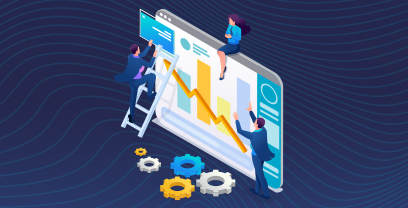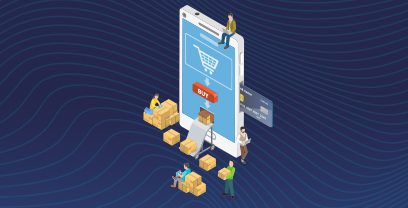|
The Forrester Wave™: Supplier Value Management Platforms, Q3 2024 See Report
Blog »
Let’s Get Digital: Introducing your Source-to-Pay Guide

di Vishal Patel
In today’s highly competitive business environment, it’s essential for organizations to have a comprehensive Source-to-Pay (S2P) solution to reduce costs, strengthen supplier relationships, manage risk, and gain better visibility into spend and the overall supply base.
A comprehensive Source-to-Pay platform is a critical component of an organization’s IT environment. Similar to how CRM manages everything around the customer, an S2P platform manages everything around the supplier. It is a crucial process for organizations that are looking to streamline their procurement activities, better manage spend and suppliers and increase operational efficiency.
What is Source-to-Pay?
The Source-to-Pay process itself is quite broad but it covers most if not all the aspects of a procurement organization, at least from a process and technology perspective. S2P is the end-to-end process that encompasses all the activities between an organization and its suppliers. It starts with identifying the right suppliers for a need, sharing requirements and evaluating supplier offers, selecting the most appropriate supplier, negotiating terms and contracting with them to receive goods and/or services. The last phase of the process, also known as Procure-to-Pay includes the ordering of goods/services, receiving of these, invoicing and payment to suppliers.
Source-to-Pay is typically broken into two parts – upstream and downstream. Upstream covers all the strategic procurement activities such as spend analysis, sourcing, contract management and supplier management (which includes supplier information, risk and performance management). Downstream activities include e-procurement, purchase orders, invoice automation and accounts payable and payment processes.
The 7 Steps of Source-to-Pay
Source-to-Pay is an interconnected cycle that gives Procurement the means to drive value for their business. Through its sophisticated series of processes, organizations can unlock efficiencies and maximize profits like never before.
- Spend Analysis: Understanding their spend is one of the first steps a Procurement organization goes through-as a determinant for: .Who are you buying from, what are you buying, how much are you buying, what price are you buying at, is it on or off-contract, etc.
- Sourcing: Where Procurement often creates value first. Either through data analysis or demand from the business–there is a need to execute a sourcing event. This is where various are invited to fulfill a certain requirement. An RFI/RFP is issued and suppliers provide their responses, one or more is selected and awarded business.
Supplier Management: The foundation of Source-to-Pay, supplier onboarding, information, risk, and performance management throughout the lifecycle of a supplier relationship. All parts of the S2P process are connected to the supplier in some way and it is essential that there is a 360 degree view and access to supplier data. Also included: supplier improvement plans, innovation plans and overall supplier collaboration.
Contract Management: The piece that connects the upstream and the downstream, where value starts being captured. The contracts govern the relationship between the buyer and supplier, an essential process to inform Procure-to-Pay.
Purchasing: The first part of the Procure-to-Pay process where someone in an organization has a need (product and/or service); the process for buying approval, supplier selection (ideally a contracted supplier), sending a purchase order, receiving the item or service and all the parts in between (there can be a lot). Purchasing is also where value is captured (i.e., preferred terms are negotiated in sourcing but only captured if purchased against)
Invoicing: The most important part of the process for the supplier–getting paid. The Accounts Payable includes: How the supplier submits an invoice, how it is received, reviewed and validated (against the order, receipt, tax requirements, etc) by the AP team and the approval process it goes through to be paid.
Payments: Finally, the actual payment. Traditionally a process that sat outside of S2P but evolved to become a part of it. This process handles the execution of the payment, instructing the bank or payment provider and reconciling that with the invoice, order, etc.
The Benefits of Source-to-Pay
The market for S2P has evolved significantly in recent years, becoming an essential component of procurement strategy for most companies. This rise in importance is due to the potential value that S2P initiatives can deliver. Even when considering a digital transformation initiative in one part of S2P such as Procure-to-Pay, it is important to consider the implications on the rest of the process. There is huge value in a tightly integrated S2P process where data can easily be updated, workflows are linked together, analytics span across process areas, etc.
There are strong tangible benefits for having an efficient and automated source-to-pay process, including:
- Improve ability and speed to identify/capture savings
- Orchestration and visibility into spend
- Better management of supplier relationships
- Visibility around supplier risk and performance
- Improved process efficiency and automation
- Compliance controls where needed
- Higher quality of data around spend and suppliers
Source-to-Pay Details
- Cost-savings: One of the main benefits of S2P software is the ability to identify areas for cost savings and execute a plan to capture those savings. By gaining visibility into spending patterns, demand, supplier performance, and supply markets–opportunities will be uncovered.
- Spend under management: S2P software can help procurement teams better manage the percentage of company spend that is under contract and under management. This can be done by automating the sourcing and contract management processes, which helps ensure that more spend is captured in the S2P process, including direct materials spend.
- Supplier on-boarding time: S2P can significantly reduce the time it takes to on-board new suppliers. By automating the supplier registration and qualification process, procurement teams can more quickly evaluate and onboard certain types of suppliers, whilst doing more due diligence on others.
- Supplier 360: S2P software can help gather and maintain a single source of truth for supplier information and activity, feeding all the other Procurement processes with real-time information.
- Process efficiency: S2P software can automate manual processes and reduce the time it takes to complete various procurement activities, such as requisition approvals, RFXs, contract creation, invoice matching and much more
- Compliance: S2P software can help ensure compliance with company policies and procedures, as well as regulatory requirements, by automating the approval and documentation process for procurement activities.
Overall, it has become clear that a strong Source-to-Pay technology is essential for Procurement to continuously generate value for the business. Today, it is even more essential as organizations grapple with inflation, third-party risk, ESG requirements, and supply continuity.
Ready to revolutionize your S2P process? Let’s get started below!
Generate Greater and More Sustainable Value Across Your S2P Process

Vishal Patel
VP Product Marketing
Vishal has spent the last 15 years in various roles within the Procurement and Supply Chain technology market. As an industry analyst, he researched and advised organizations in various industries on best and innovative practices, digitization and optimization. He brings a thorough understanding of market trends and digital technologies that can help enterprises be more effective with their Procurement and Supply Chain strategies. He works to ensure that organizations are empowered with technology platforms that enable flexibility, innovation, and agility.
You can connect with Vishal on Linkedin


